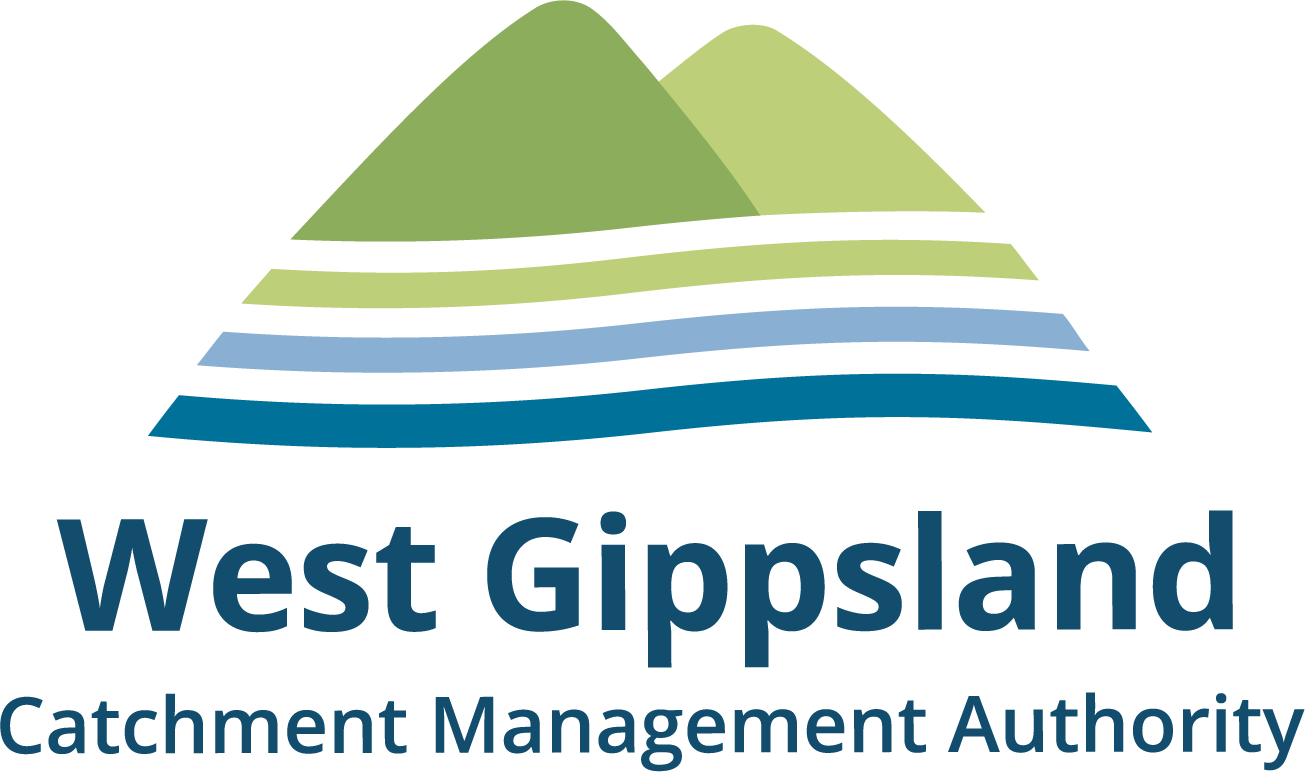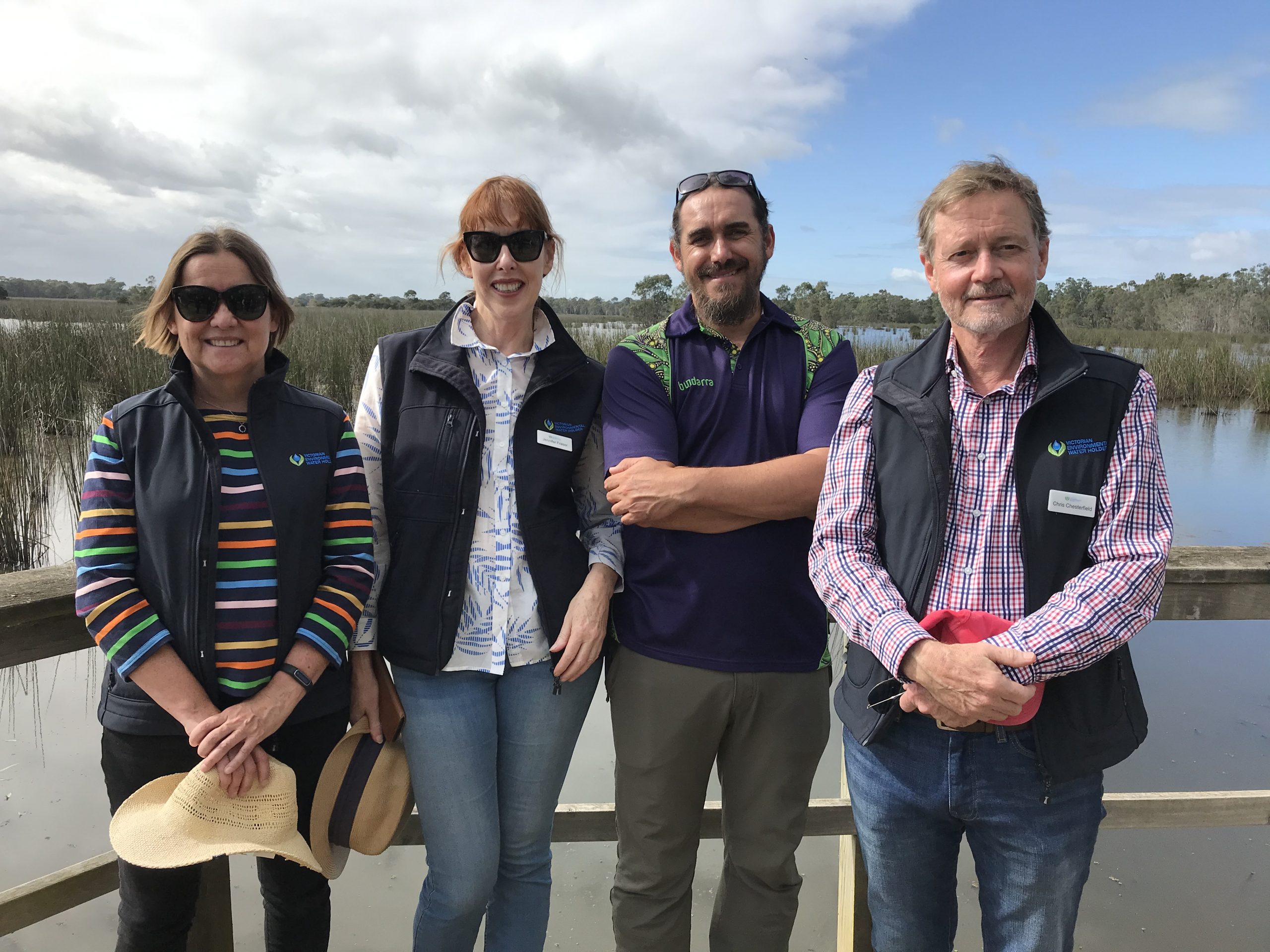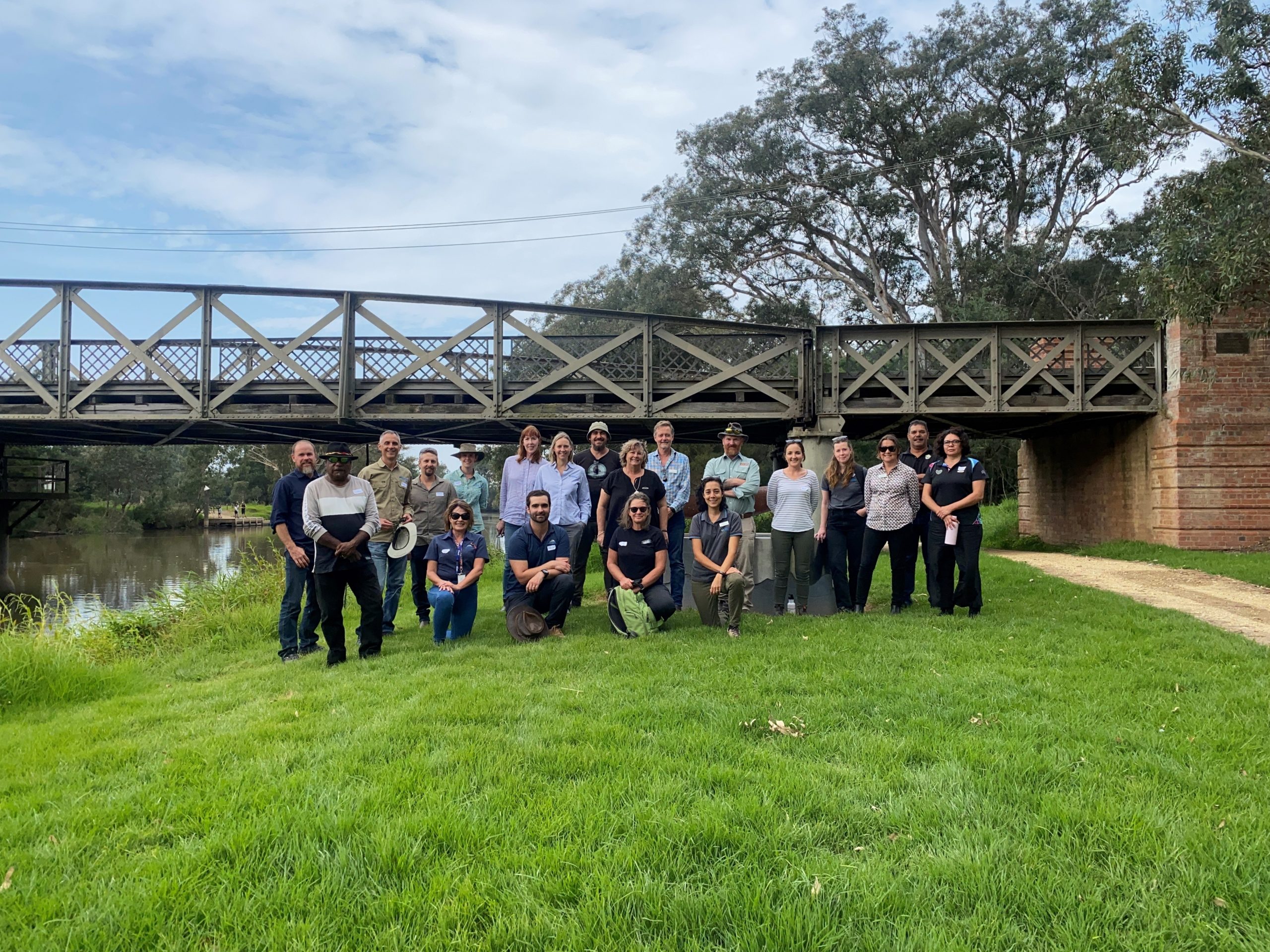World Water Day formed the perfect backdrop for four Commissioners from the Victorian Environmental Water Holder (VEWH) to visit West Gippsland and see firsthand the challenges and opportunities for water for the environment in the region.
The visit, hosted by West Gippsland Catchment Management Authority (WGCMA) in partnership with Gunaikurnai Land and Waters Aboriginal Corporation (GLaWAC) was a wonderful opportunity to learn, share knowledge and talk about future water allocations and the intrinsic connection that Aboriginal people have had to land and waterways for millennia.
The Commissioners spent two days in the region focusing primarily on the role of water for the environment in the Latrobe River system from the upper reaches to the lower lying wetlands.
A key focus was to visit the Latrobe coal mines to discuss rehabilitation options and their implications for the environment, Traditional Owners and the broader community. Rhonda Hastie, Acting CEO of the Mine Land Rehabilitation Authority, presented to the group and answered questions.
In the lower reaches of the Latrobe, the Commissioners toured a private property to learn about the recent achievements of WGCMA in partnering with landholders to maximise the benefits of water for the environment.
Sale Common and Heart Morass in the Lower Latrobe Wetlands were the site for discussions about what a healthy wetland should look like, and the opportunities for Gunaikurnai Traditional Owners to be more actively involved in environmental water on Country.
The VEWH was established in 2011 and works with catchment management authorities and Melbourne Water to ensure environmental water entitlements are used to achieve the best environmental outcomes with the water that is available.
VEWH Chairperson Chris Chesterfield, explained what water for the environment is and its importance: “Many people expect that rivers and creeks take water from rain and runoff and don’t need anything else. The reality is we’ve taken so much water from the environment for purposes such as irrigating crops and providing water for power stations.
“In the recent decade, the government has provided the environment with legal entitlements for water (known as water for the environment) and we manage those entitlements to ptimise environmental outcomes – whether for breeding fish, waterfowl or maintaining vegetation. The role of the VEWH is to hold those water entitlements across Victoria and work in partnership with CMAs to plan how that water should be used.”
“We had members of GLaWAC on the tour and we are really looking to support Traditional Owners to play much more of a role in the planning and decision making for environmental water,” Chris concluded.
“Traditional Owners want to be at the table, be involved and be part of the decision making. This is important not just for Traditional Owners – it’s also important for the health of Country and the whole community,” said Rueben Berg, a Gunditjmara man and VEWH Commissioner.
“It’s about building partnerships. It gives a voice – for me and the Community and that way things will snowball from there and get better. It’s about healing and protecting and to make it right and the best it can be for future generations,” said Nicky Moffatt, GLaWAC Water Engagement Officer.
“We want to get a greater understanding of what’s happening for the WGCMA and also for Traditional Owners and how we can help determine where our environmental water is best used,” said Peta Maddy, Deputy Chairperson for VEWH.
“We came to talk about some of the more complicated water management issues in parts of West Gippsland. We met with the mine rehabilitation authority and they talked to us about the role that water might play in the rehabilitation of the mines and, as a consequence, talked about the complexities of that. For us it’s about listening, learning, and talking,” reflected Commissioner Jennifer Fraser.
“The visit highlighted the importance of water to Traditional Owners and how aspirations are gaining momentum to be more active in planning and managing water,” said Dan Garlick, WGCMA Executive Manager – Catchment Planning and Delivery.
“I am proud of what we have done in the water for the environment arena and the partnership with GLaWAC. Hearing Traditional Owner colleagues talk on Country about the importance of the CMA and what we have being doing to support them was very inspiring.”
Water for the environment releases are planned based on environmental needs, climate forecasts, past flows, and current science. Planned flows and updates for West Gippsland along with information about Water for the Environment can be found here.





